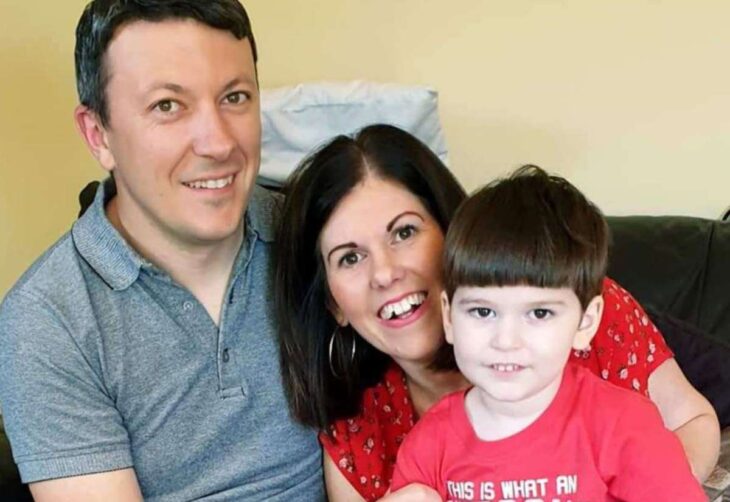
Ashford parents Emily and Carl De’ath urge doctors to understand rare epilepsy condition called Dravet Syndrome
A couple whose baby developed a rare form of epilepsy have moved to within metres of a hospital due to the frequent number of visits they have to make.
Emily and Carl De’ath live in Willesborough Lees, Ashford, with their seven-year-old son, Curtis.

However, the youngster’s start to life has been anything other than plain-sailing.
At just 17 weeks old, a sudden seizure saw some of Curtis’s veins collapse during a 45-minute ordeal which would change his life forever.
Emily explained: “On the night of his first seizure, I noticed on the baby monitor he looked like he was moving about.
“But something didn’t feel right, so despite not wanting to wake him I crept into his room to check he was okay and to my terror I could hear a funny choking noise.
“I turned on the light and he was white as a sheet, eyes locked and wide open, his lips blue and he was foaming at the mouth.
“His body was all stiff and shuddering and he looked like he was choking, [so] I screamed to Carl to call an ambulance.

“I can remember being so scared my whole vision went white. I thought ‘is he actually going to die?’
“It was pure panic and terror and I felt so helpless.”
After arriving in hospital, doctors gave Curtis multiple medications and had to drill into his legs after some of his veins collapsed.
Despite the seizures stopping 45 minutes later, he went on to develop a rash across his body.
It led to Curtis and his parents staying in hospital for three nights before being given a misdiagnosis of a complex febrile convulsion due to a viral infection.
Emily added: “At that time we were thinking that this was just a one-off, horrendous ordeal but little did we know that there was more to come.”

A few months later, Curtis went into a one-sided seizure and was blue-lighted to hospital again – something which led to him being placed in an induced coma.
At 11 months old, the tot was eventually given the correct diagnosis of Dravet Syndrome.
The neurological condition, which begins in infancy, occurs in about one in every 15,000 live births and is one of the most treatment-resistant forms of epilepsy.
In about 85% of cases, it is caused by a mutation in a gene known as SCN1A.
It can lead to individuals having multiple seizures each day, and, in some cases, hundreds.
There is also a much higher risk of SUDEP (Sudden Unexpected Death in Epilepsy) compared to other forms of epilepsy.

Developing Dravet Syndrome has since caused Curtis, who has spent a number of weeks in hospital already this year, to need a feeding tube and use a wheelchair due to his loss of mobility.
Constant trips to the William Harvey Hospital also led Emily and Carl to move home to be closer to the site.
Previously living in Silver Hill Road, they moved to The Street in Willesborough Lees at the start of the pandemic to be just metres away from the hospital.
Meanwhile, the couple are now trying to spread the word during Dravet Syndrome Awareness Month this June.
They hope this can lead to more people receiving an earlier diagnosis and gaining quicker access to treatments, therapies and support.

“For the first two years of Curtis’s life, we were pretty much in hospital every few weeks,” Emily said.
“We were just in survival mode, not knowing what the next day was going to bring.
“For someone who goes through so much, Curtis is so placid and happy which makes it much harder to watch him suffering.
“Even on the hardest days he always manages to say or do something which makes us smile.
“Dravet is a rare condition, but such a devastating one and so much more than just seizures.

“It’s important medical professionals are aware of it as treatment in the early months of life is so vital.
“There are so many clinical trials taking place for new treatments and it is hugely important these are funded to help our children.
“It may be too late for Curtis, but gene therapy is evolving and that gives hope to one day there being a cure.”
The couple have been helped during Curtis’ journey by Dravet Syndrome UK.
The body is the only charity dedicated to improving the lives of those affected by the condition in the country.
>